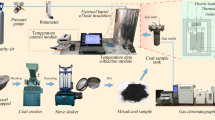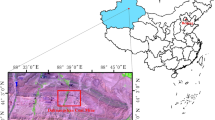Abstract
METALLURGICAL coke is made by carbonizing coal in an oven that consists essentially of two heated walls spaced some 40–45 cm. apart. Coal is charged into the already heated oven, and the isotherms in the coal are found to be substantially pairs of planes parallel to the oven walls. With the passage of time, both components of any pair of isothermal planes will advance through the charge to the centre of the oven. As the dimensions of the walls are large with respect to their spacing, the system may be regarded for the purpose of analysis as one-dimensional and, if the thermal properties of the charge are known, the temperature distribution at any time should be determinable by solution of the one-dimensional case of the heat-flow equation.
This is a preview of subscription content, access via your institution
Access options
Subscribe to this journal
Receive 51 print issues and online access
$199.00 per year
only $3.90 per issue
Buy this article
- Purchase on Springer Link
- Instant access to full article PDF
Prices may be subject to local taxes which are calculated during checkout
Similar content being viewed by others
References
Liebmann, G., Brit. J. App. Phys., 4, 193 (1953), and Proceedings of the General Discussion on Heat Transfer, London, 1951, p. 300, published jointly by the Institution of Mechanical Engineers and the American Society of Mechanical Engineers.
Author information
Authors and Affiliations
Rights and permissions
About this article
Cite this article
MILLARD, D. Heats of Reaction during Carbonization as deduced from Temperature Surveys of a Coke Oven. Nature 174, 1099–1100 (1954). https://doi.org/10.1038/1741099a0
Issue Date:
DOI: https://doi.org/10.1038/1741099a0
Comments
By submitting a comment you agree to abide by our Terms and Community Guidelines. If you find something abusive or that does not comply with our terms or guidelines please flag it as inappropriate.



